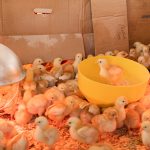Separating chickens is a crucial aspect of poultry management that significantly impacts flock health and productivity. This practice serves multiple purposes throughout the birds’ lives. One primary reason for separation is to manage breeding programs, allowing for the controlled passing of specific genetic traits to offspring.
Separation also plays a vital role in disease control, as it enables the isolation and treatment of sick or parasite-infested birds, preventing the spread of illness to the rest of the flock. Additionally, separating chickens facilitates the introduction of new birds to an existing flock by providing a period of adjustment and integration, reducing the risk of aggression or bullying. By implementing proper separation techniques, poultry managers can maintain healthier, more productive flocks and ensure better overall outcomes in their operations.
Table of Contents
- 1 Factors to Consider When Deciding How Long to Keep Chickens Separate
- 2 Understanding the Behavior of Chickens in a Separate Environment
- 3 Potential Risks of Keeping Chickens Separated for Too Long
- 4 Tips for Introducing Chickens After Being Separated
- 5 Monitoring the Health and Well-being of Separated Chickens
- 6 Seeking Professional Advice on Chicken Separation Periods
- 7 FAQs
- 7.1 What is the purpose of keeping chickens separate?
- 7.2 How long should new chickens be kept separate from an existing flock?
- 7.3 How long should injured or sick chickens be kept separate from the rest of the flock?
- 7.4 How long should broody hens be kept separate from the rest of the flock?
- 7.5 How long should aggressive or bullying chickens be kept separate from the rest of the flock?
Key Takeaways
- Separating chickens is important to prevent aggression, bullying, and disease transmission within the flock.
- Factors to consider when deciding how long to keep chickens separate include the reason for separation, the age and health of the chickens, and the space and resources available for separate housing.
- Understanding the behavior of chickens in a separate environment can help in managing their stress levels and ensuring their well-being during the separation period.
- Potential risks of keeping chickens separated for too long include increased stress, decreased egg production, and the development of aggressive behavior.
- Tips for introducing chickens after being separated include gradual reintroduction, providing plenty of space and resources, and monitoring for signs of aggression or stress.
- Monitoring the health and well-being of separated chickens is crucial, and regular checks for signs of illness, injury, or stress should be conducted.
- Seeking professional advice on chicken separation periods can provide valuable insights and guidance for managing the separation process effectively.
Factors to Consider When Deciding How Long to Keep Chickens Separate
Reason for Separation
The reason for separation plays a significant role in determining the duration of separation. For example, if chickens are being separated for breeding purposes, they may need to be kept apart for an extended period to allow for successful mating and egg production.
Age and Temperament of Chickens
The age and temperament of the chickens will also influence the length of separation. Younger or more timid birds may require a longer adjustment period when being introduced to a new flock.
Size and Layout of the Separation Area
Furthermore, the size and layout of the separation area will also impact how long chickens need to be kept apart. Larger spaces may allow for quicker integration compared to smaller, more confined areas.
Safe and Timely Reintegration
The decision of how long to keep chickens separate is not one that should be taken lightly, as there are several factors that need to be considered. By carefully considering these factors, poultry managers can ensure that their chickens are reintegrated into the flock in a safe and timely manner.
Understanding the Behavior of Chickens in a Separate Environment

When chickens are placed in a separate environment, their behavior can change significantly as they adjust to their new surroundings. In some cases, chickens may become more agitated or anxious when separated from their flock mates, especially if they are used to being part of a larger group. Additionally, chickens may exhibit signs of stress or aggression when introduced to new birds in a separate environment, as they establish a new pecking order and hierarchy within the group.
On the other hand, some chickens may become more relaxed and sociable when separated from a larger flock, as they have more space and resources available to them. Overall, understanding the behavior of chickens in a separate environment is crucial for ensuring that they are reintegrated into the flock in a safe and stress-free manner. The behavior of chickens in a separate environment can vary significantly depending on their individual personalities and experiences.
Some chickens may become more agitated or stressed when separated from their flock mates, while others may become more relaxed and sociable. By understanding these behavioral changes, poultry managers can ensure that their chickens are reintegrated into the flock in a way that minimizes stress and aggression.
Potential Risks of Keeping Chickens Separated for Too Long
While separating chickens can be beneficial in certain situations, there are also potential risks associated with keeping chickens separated for too long. One of the main risks is that prolonged separation can lead to increased stress and anxiety in chickens, which can have negative effects on their health and well-being. Additionally, keeping chickens separated for extended periods can also hinder their ability to reintegrate into the flock, as they may struggle to establish social hierarchies and relationships with other birds.
Furthermore, prolonged separation can also lead to decreased egg production and fertility in breeding programs, as chickens may become less receptive to mating when kept apart for too long. Overall, it is important to be mindful of the potential risks of keeping chickens separated for too long and to reintegrate them into the flock in a timely manner. Keeping chickens separated for too long can have several potential risks that can negatively impact their health and productivity.
Prolonged separation can lead to increased stress and anxiety in chickens, hinder their ability to reintegrate into the flock, and decrease egg production and fertility in breeding programs. By being aware of these risks, poultry managers can ensure that their chickens are reintegrated into the flock in a way that minimizes negative effects on their health and well-being.
Tips for Introducing Chickens After Being Separated
Introducing chickens after being separated requires careful planning and consideration to ensure a smooth transition for all birds involved. One important tip is to gradually reintroduce chickens to each other in a neutral environment, such as a separate pen or enclosure that is unfamiliar to all birds. This allows them to establish new social hierarchies without the risk of aggression or bullying from established flock members.
Additionally, providing plenty of space and resources during the reintroduction process can help minimize competition and stress among birds as they adjust to being back together. It is also important to monitor the behavior of all birds closely during the reintroduction process and be prepared to separate any individuals that exhibit signs of aggression or distress. By following these tips, poultry managers can ensure that their chickens are reintroduced in a safe and controlled manner.
Introducing chickens after being separated requires careful planning and consideration to ensure a smooth transition for all birds involved. Gradually reintroducing chickens in a neutral environment, providing plenty of space and resources, and monitoring their behavior closely are all important tips for ensuring a successful reintroduction process. By following these tips, poultry managers can help minimize stress and aggression among birds as they adjust to being back together.
Monitoring the Health and Well-being of Separated Chickens

Behavioral Observation
Monitoring the health and well-being of separated chickens is crucial for ensuring that they are reintegrated into the flock in a safe and timely manner. One important aspect of monitoring is observing the behavior of individual birds for signs of stress or aggression during separation and reintroduction periods.
Physical Health Checks
Regularly checking on the physical health of separated chickens, such as their weight, feather condition, and overall appearance, can help identify any potential health issues that may arise during isolation.
Provision of Nutrition and Veterinary Care
It is also important to provide appropriate nutrition and veterinary care for separated chickens to ensure that they remain healthy and resilient throughout the separation period. By monitoring the health and well-being of separated chickens closely, poultry managers can identify any potential issues early on and take appropriate action to address them.
Seeking Professional Advice on Chicken Separation Periods
Seeking professional advice on chicken separation periods can provide valuable insights and guidance for poultry managers looking to optimize their flock management practices. Consulting with experienced poultry veterinarians or animal behavior specialists can help identify specific needs and challenges related to separating chickens in different situations. Additionally, seeking advice from other poultry managers or industry experts can provide valuable perspectives on best practices for managing separation periods effectively.
By seeking professional advice on chicken separation periods, poultry managers can gain valuable knowledge and expertise that can help improve the health and productivity of their flocks. Seeking professional advice on chicken separation periods can provide valuable insights and guidance for poultry managers looking to optimize their flock management practices. Consulting with experienced poultry veterinarians or animal behavior specialists, seeking advice from other poultry managers or industry experts are all important ways to gain valuable knowledge and expertise on best practices for managing separation periods effectively.
By doing so, poultry managers can improve the health and productivity of their flocks based on professional advice.
If you’re considering how long to keep chickens separate, you may also be interested in learning about the benefits of insulating a chicken coop. Insulating a coop can help regulate temperature and keep your chickens comfortable in various weather conditions. Check out this article for tips on how to properly insulate your chicken coop.
FAQs
What is the purpose of keeping chickens separate?
Keeping chickens separate can serve several purposes, such as preventing the spread of disease, allowing new chickens to acclimate to the flock, or protecting weaker or injured birds from being bullied.
How long should new chickens be kept separate from an existing flock?
New chickens should be kept separate from an existing flock for a minimum of 30 days to prevent the spread of disease and allow the birds to acclimate to each other.
How long should injured or sick chickens be kept separate from the rest of the flock?
Injured or sick chickens should be kept separate from the rest of the flock until they have fully recovered and are no longer at risk of being bullied or further injured.
How long should broody hens be kept separate from the rest of the flock?
Broody hens can be kept separate from the rest of the flock for the duration of their broodiness, which typically lasts around 21 days until the eggs hatch.
How long should aggressive or bullying chickens be kept separate from the rest of the flock?
Aggressive or bullying chickens should be kept separate from the rest of the flock until their behavior has been addressed and they are no longer a threat to the other birds. This may vary depending on the individual bird and the effectiveness of behavior modification techniques.
Meet Walter, the feathered-friend fanatic of Florida! Nestled in the sunshine state, Walter struts through life with his feathered companions, clucking his way to happiness. With a coop that’s fancier than a five-star hotel, he’s the Don Juan of the chicken world. When he’s not teaching his hens to do the cha-cha, you’ll find him in a heated debate with his prized rooster, Sir Clucks-a-Lot. Walter’s poultry passion is no yolk; he’s the sunny-side-up guy you never knew you needed in your flock of friends!







